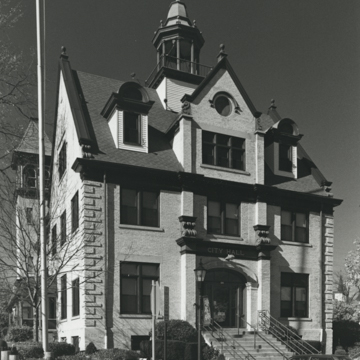West Bend City Hall is an impressive high-style municipal building for such a small city. Van Ryn and de Gelleke of Milwaukee, who won a regional design contest, opted for a small-scale German Renaissance Revival composition, suggested by the Germanic origins of many of the city’s residents. The cream brick building is two-and-a-half stories in height with a side-gabled roof, but its belvedere and its gabled wall dormer, flanked by smaller dormers with semicircular iron hoods, make it appear taller. Mock quoins at the corners, flat lintels over the first-story windows, and large volutes atop the piers flanking the arched entrance lend a stately appearance to this attractive structure. Attached to the rear is the fire department building, notable for its four-story hose tower.
You are here
West Bend City Hall
If SAH Archipedia has been useful to you, please consider supporting it.
SAH Archipedia tells the story of the United States through its buildings, landscapes, and cities. This freely available resource empowers the public with authoritative knowledge that deepens their understanding and appreciation of the built environment. But the Society of Architectural Historians, which created SAH Archipedia with University of Virginia Press, needs your support to maintain the high-caliber research, writing, photography, cartography, editing, design, and programming that make SAH Archipedia a trusted online resource available to all who value the history of place, heritage tourism, and learning.















